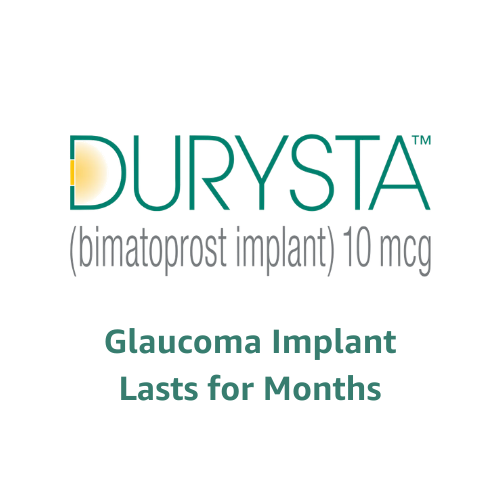Durysta | Implantable Glaucoma Device


In March of this year the FDA approved Durysta™ a biodegradable and sustained-release implant that delivers medication to control open-angle glaucoma. It is the first implantable sustained-release delivery system for reducing intraocular pressure.
How Long Does Durysta Last?
The implant was designed to last four to six months, but the effects are lasting longer than that in some patients. In the clinical trials 40% of patients did not require additional intraocular pressure lowering treatment for at least one year after the implant.
Sustained Release Bimatoprost
The implant contains Bimatoprost which was approved by the FDA in 2001 and has been widely used since then to treat glaucoma and ocular hypertension. It is in a class of medication called prostaglandin analogs and it lowers pressure in the eye by increasing the flow of fluids out of the eye.
Implantation
The implant is preloaded with a sterile applicator and is inserted into the anterior chamber of the eye. The implant will remain there dispensing medication until it biodegrades. In clinical trials, the device was well-tolerated in the majority of patients. The procedure is not painful and can be done in the doctor’s office.
Ozurdex, another Allergan product, is an intravitreal injection used to treat a variety retinal disorders such as diabetic macular edema and retinal vascular occlusions.
Durysta Increases Compliance
A biodegradable implant to deliver medication is a big step forward in overcoming a challenge in treating open-angle glaucoma—patient compliance to the glaucoma eye drop therapy doses and schedules. Non-adherence to glaucoma therapy has been reported to be from 30% to 80%.
Sustained and consistent patient adherence to ocular hypotensive medications is critical for delaying the disease progression and preserving sight. Some of the reasons for non-adherence are forgetfulness, not knowing the correct way to apply the eye drops so patients not getting enough medication into the eye, and patients not aware of the risks to their eyesight of skipping doses.
The only proven method of slowing the progression of optic nerve damage from glaucoma is to lower the intraocular pressure.
The optic nerve is a bundle of more than a million nerve fibers that carry visual impulses from the retina to the brain. Damage to the optic nerve cannot be repaired so that’s why it is important for glaucoma treatment to be followed accurately and consistently.
How is Glaucoma Detected?
Glaucoma rarely causes symptoms early in the disease. In the early stages before it has caused any vision loss, it can only be diagnosed by an eye exam.
